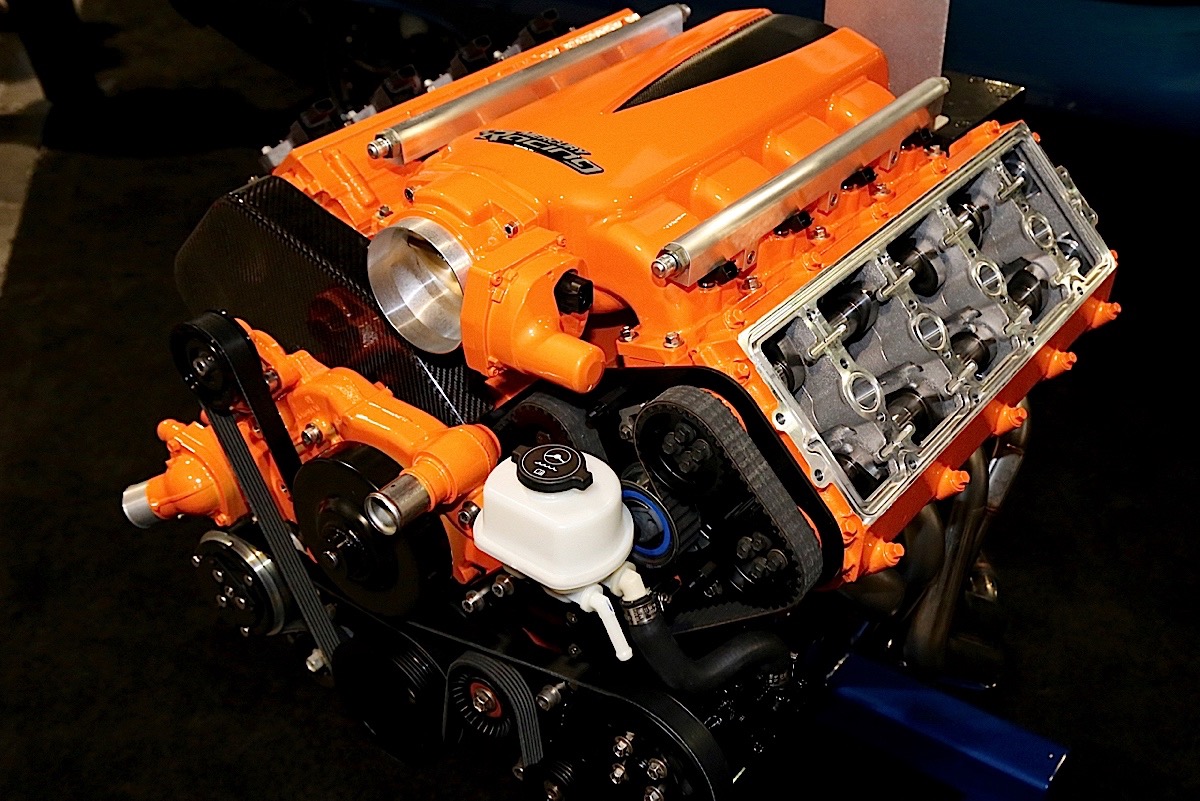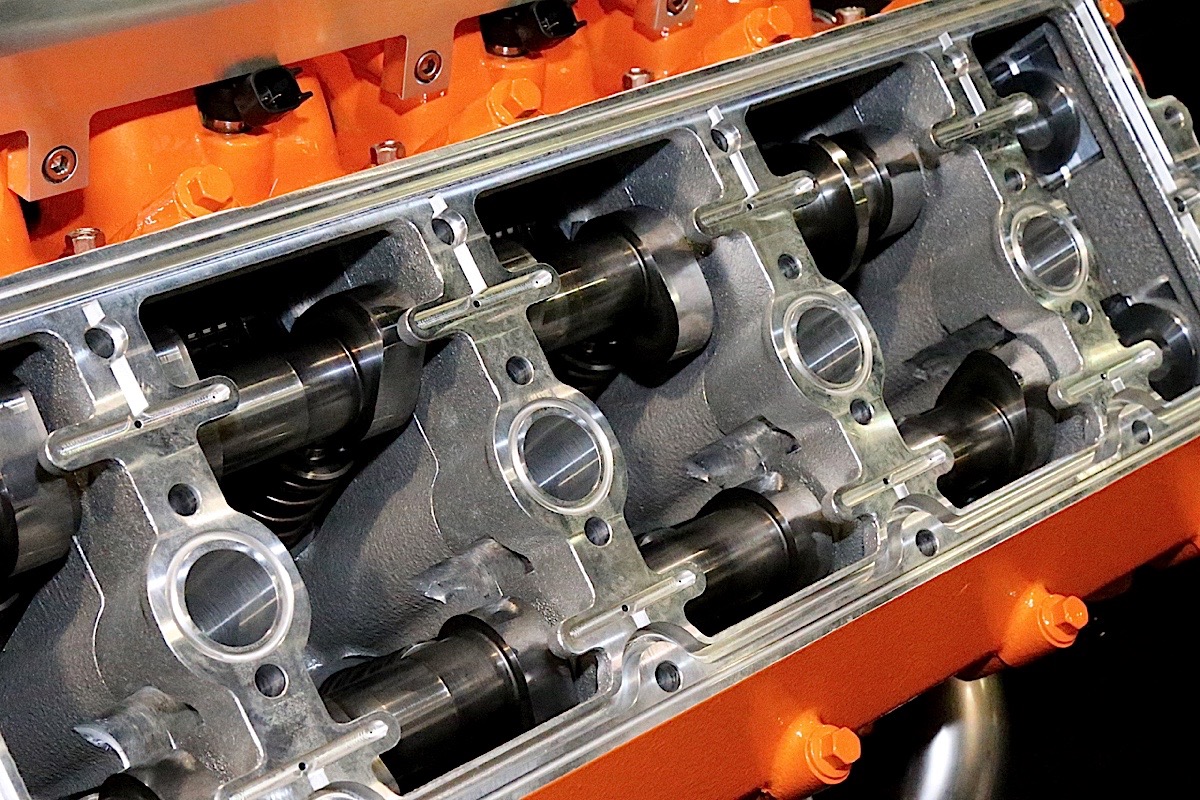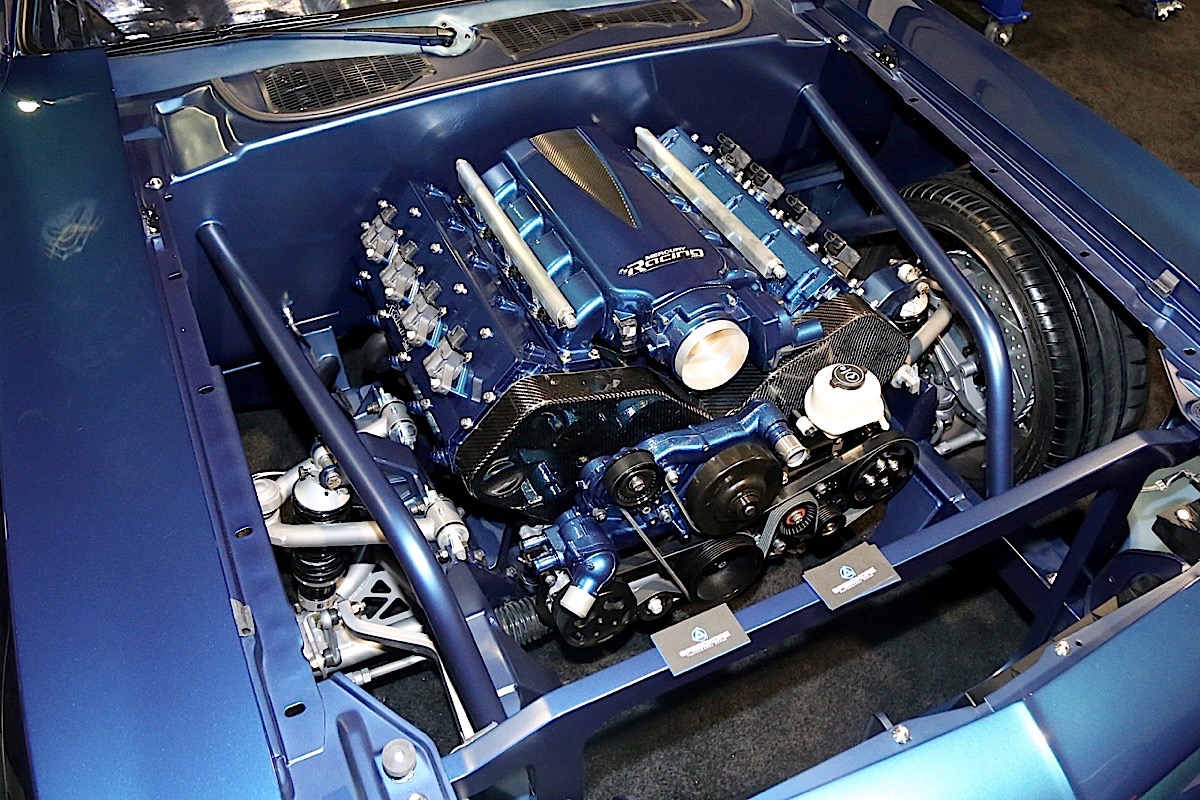Four-Valves Per Cylinder? The Mercury Racing SB4

Let’s face it, we here at LS1Tech really feel that the LS engine is the greatest V8 in the world and it takes some real work to make another V8 beat it. The Europeans have tried and, really, haven’t found the perfect match between displacement, power, and low maintenance costs.
However, if there is one thing that really limits how much power the LS can put out it’s having only two-valves per cylinder. While there have been some four-valve cylinder heads, not many have been packaged right or don’t require major modification to the block because they continue to try and retain the pushrod setup. Mercury Racing has another solution: the SB4.

First, you’re probably scratching your head at that statement about power limits and two-valves per cylinder. You’ve seen two-valve engines produce over 900-horsepower, NASCAR, drag racing, and even IMSA racing have all proven that two-valves can make power.
Well, those engines have some rather radical design and don’t last longer than a race or two before they need rebuilding, so they can push the limits of how much valve you can fit inside the combustion chamber but really you can do better by adding valves over making them bigger.

It comes down the effective area of four valves versus two; in this case a four-valve will flow more air for the same lift of a two-valve head because there is more area. Volume of a cylinder is equal to pi times the radius squared times height (or in our case the opening of the valve). For our example, we have a pair of heads where the valve lift is equal at 5mm.
Our first head is a single intake valve for the intake at 50mm in diameter. Our second head is a dual intake valve with a diameter of 30mm, almost 67-percent smaller than our single valve. To work this out, we’re only going to multiply our real numbers. The single valve will have a volume of 250pi square-millimeters. Our dual valve, on the other hand, will have a volume of 300pi square-millimeters. That means our dual valve head is flowing nearly 20-percent more than our single, but larger valve head. Despite mentioning this for the intake, it’s all the same for the exhaust as well.
You can learn more here:
[youtube https://www.youtube.com/watch?v=PXD_AvKbCMg?rel=0&w=710&h=399]

That’s exactly why a 32-valve head for a LS-engine is no laughing manner and will really change it. However, instead of going pushrod, Mercury Racing has gone a step further and converted it into a DOHC, a dual overhead cam called the SB4.
To get away with that one, a blank cam is inserted into the block to maintain proper lubrication of the entire engine and to have the original cam gear work as a drive for the cam belts. This will be a pure street engine, for those who can legally change their heads and don’t have to worry with California’s draconian emissions regulations.

Mercury claims a LS-engine with these heads will flow better (as we demonstrated above), allow higher engine rev limits, improve durability thanks to less valvetrain mass, and get away with milder cam timing requirements. The biggest change for packaging after the DOHC conversion is that the exhaust valve angle was tipped in to narrow the overall dimensions of the new head.
The exhaust flange is identical to a stock LS3 so you can use your headers in this design when you adjust the mounting angle and bolt-holes. Mercury doesn’t expect much modification, though. No mention on the intake, but we have to imagine that will need to be custom for the new dual intake valves for proper airflow. Expect more information coming summer of this year with a price tag around $26- to $30-thousand dollars.
